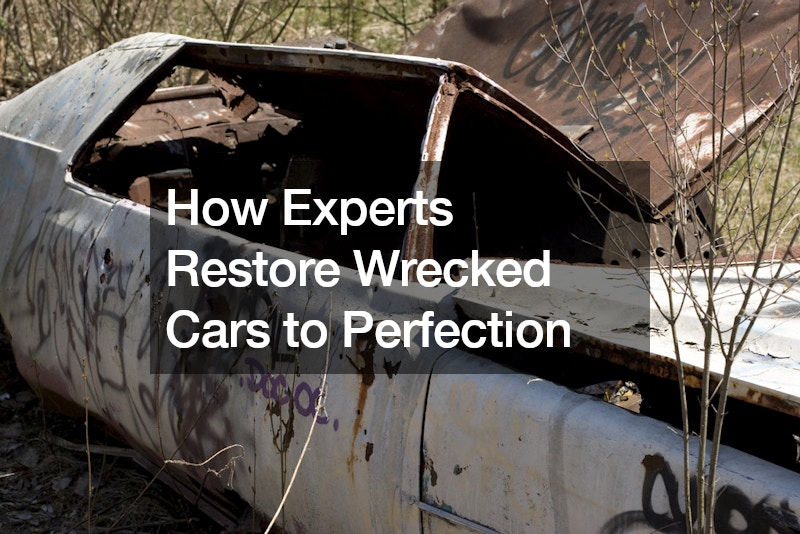Car accidents are an unfortunate reality, with nearly 6.5 million occurring in the US alone in 2017. Despite the frequency of these incidents, the expertise of local collision repair centers ensures that damaged vehicles can be meticulously restored to their former glory. This blog post explores the advanced techniques and tools used by professionals to repair and rejuvenate wrecked cars.
Initial Assessment and Structural Repairs
When a vehicle arrives at a collision center, the first step is a thorough assessment to determine the extent of the damage. For cars with structural damage, a frame machine is often employed. This powerful tool is essential for realigning the car’s frame, ensuring it is square and structurally sound. Technicians use computer systems like ALLDATA to access manufacturer specifications, guiding them on where to place mounting clamps and how to proceed with the repair.
The frame machine works in conjunction with a measuring system that digitally assesses the car’s structure. This system provides real-time data, allowing technicians to see how the car’s frame changes as they work on it. The goal is to reverse the damage and bring the structure back to its original specifications, often within millimeters of precision.
Precision Dent Removal with the Flatliner
Not all car damage requires heavy machinery. For smaller, more delicate dents, technicians use a tool called the flatliner. The process begins by identifying the damage with the help of special lighting. This ensures even the smallest imperfections are visible.
Once the damage is identified, the area is sanded to create a solid ground for the pulling process. Technicians weld pulling keys onto the dented area, which are then used to pull the dent out with a bridge tool. The bridge has a handle with threads that, when turned, shorten the handle and pull the dent out. This process might need to be repeated multiple times, adjusting for different depths and angles of the dent.
After the dent is pulled, it is essential to address the crowns or raised edges around the dent. This often involves tapping these areas down to ensure a smooth surface. The precision and attention to detail required in this process are critical for achieving a flawless finish.
Finishing Touches with Bondo
Once the structural repairs and dent removal are complete, the next step is to smooth out any remaining imperfections. This is where Bondo, a fast-drying filler, comes into play. Technicians mix Bondo on a board and use plastic spreaders to apply it to the affected areas. The application must be precise, ensuring the filler maintains the vehicle’s original contours.
After the Bondo is applied and dried, it is sanded down to create a smooth, even surface. This step is crucial as it prepares the car for painting, ensuring that the repaired areas blend seamlessly with the rest of the vehicle.
Painting and Final Touches
The final stage of the restoration process is painting. Before any paint is applied, the car must be thoroughly cleaned to remove any contaminants. The repaired parts, as well as adjacent panels, are then primed and painted to ensure a perfect color match. Blending the paint across different panels ensures that the repair is invisible and the car looks as good as new.
The painting process varies depending on the size and complexity of the repair, but in an ideal scenario, it can be completed in just a few hours. The goal is always to achieve a flawless finish that restores the vehicle’s appearance to its pre-accident condition.
Customer Satisfaction
Restoring a wrecked car is not just about technical expertise; it is also about customer satisfaction. Knowing that their vehicle has been restored to perfection brings peace of mind to car owners who have experienced the stress of an accident. The gratification for technicians comes from seeing customers drive away happy, knowing they played a part in resolving a significant problem.
Final Thoughts
The restoration of wrecked cars involves a combination of advanced tools, precise techniques, and meticulous attention to detail. From structural realignments to the final coat of paint, every step is crucial in ensuring that the vehicle is returned to its original state, both in appearance and functionality. The expertise of collision center professionals makes this complex process look effortless, restoring not just cars but also their owners’ peace of mind.
.

